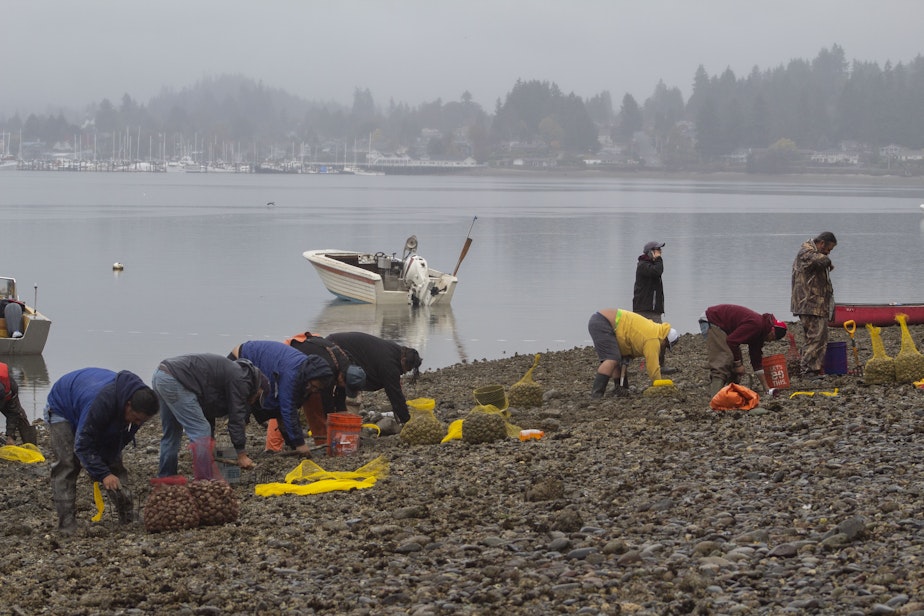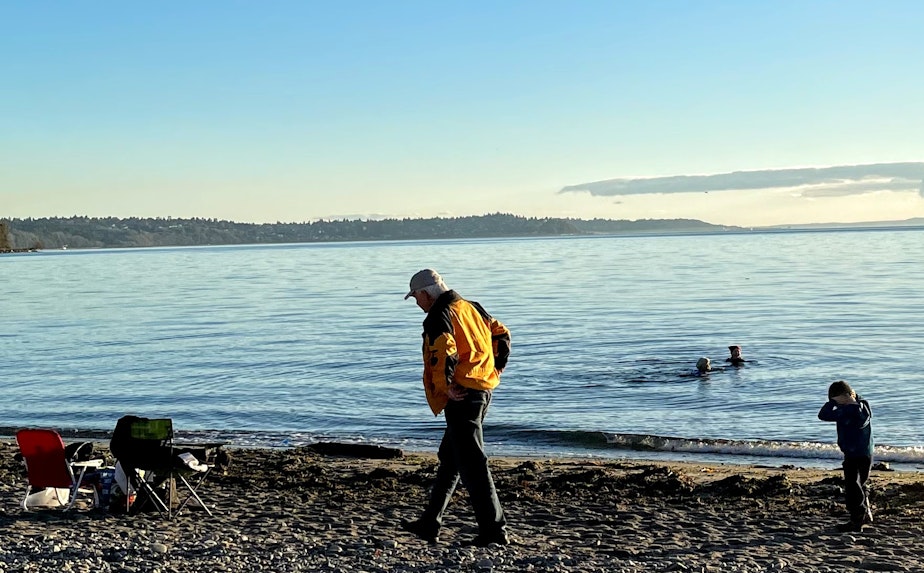King County blames power outages for big sewage spills. Tribe blames the county.

While King County officials blame power outages from a wind storm for millions of gallons of sewage entering Lake Washington and Puget Sound early Wednesday morning, critics say the county needs to be held accountable for the pollution.
In the wee hours of Wednesday morning, power outages and intense rainfall combined to knock out the West Point sewage treatment plant — King County’s largest — in Seattle’s Discovery Park. The weather also knocked out pumping stations in Medina, Seattle, and Shoreline.
As a result, the county’s sewer system spat out 11 million gallons of untreated wastewater into Puget Sound and 2.3 million gallons into Lake Washington, according to King County officials.
They described the untreated liquid as a mix of 80% stormwater and 20% raw sewage.
Public Health Seattle & King County closed saltwater beaches at Discovery Park, Carkeek Park, Golden Gardens and Richmond Beach Saltwater Park to swimming. On Lake Washington, health officials put up beach-closure signs at Howell Park, Medina Park and Madrona Park.
The pumps at the West Point plant are big. They're “the size of most people’s bedrooms,” according to Robert Waddle, who is in charge of operating King County’s wastewater treatment plants.
The county’s treatment plants and pumping stations have backup power systems, but they didn’t stop some big pumps from shutting down.
With even a brief power fluctuation, the pumps shut down to protect their electronic components from being fried, and they take a long time to get up to full speed again, Waddle said.
“We were fighting with continuous power bumps that, as soon as we had started pumping, it would knock back off, and so we struggled to get it going,” he said.
Waddle said all systems were back up and fully operating within two hours.
But during that time, the plant sent untreated sewage straight into the sound.
Sewage plants are designed to do that to avoid flooding the plant and endangering workers inside, as happened at the West Point plant during a big storm and high tide in February 2017.
Smaller spills containing raw sewage polluted three other locations:
- 2.2 million gallons spilled into Lake Washington near Seattle’s Madrona Beach as a pump station went offline from midnight to 9 a.m. Emergency generators failed to kick on, and the station’s alarm signals failed to notify operators there was a problem for nine hours, according to Waddle.
- 165,000 gallons spilled in Shoreline, where high flows overwhelmed the Richmond Beach pump station.
- 81,000 gallons spilled into Lake Washington near Medina, where a pump station was overwhelmed as it switch to backup generators and then back to its main power source.

If a plant isn’t handling exceptional water volumes at the time of a power outage, Waddle said switching to the backup power isn’t a big deal.
“Unfortunately, high flows a lot of times occur when we have high winds,” Waddle said. “And high winds cause power problems in every utility in the country that has above-ground lines.”
On the other side of the spill
“Blaming the power outage does not absolve King County of the responsibility to safely treat wastewater at all times,” the Washington Environmental Council tweeted Thursday.
“We need to find a way to prevent these spills,” Suquamish Tribe Chairman Leonard Forsman said. “It has an impact on us, both on our geoduck and oyster harvesting.”
The tribe's Port Madison Indian Reservation sits on the opposite side of Puget Sound from Seattle, but the Suquamish Tribe's traditional fishing areas and treaty rights extend to the Seattle shoreline.
In July, the Suquamish Tribe notified King County it intended to sue over the repeated sewage spills into the waters where they fish and gather shellfish. The 60-day warning is required under the Clean Water Act.
“Fecal coliform bacteria pollution is a persistent threat to human health and the safe harvest and consumption of fish from these waters,” the tribe’s lawyers wrote.
Since then, the tribe and the county have been negotiating under a nondisclosure agreement.
Forsman said the new spills aren’t helping the two sides see eye-to-eye.
“We’ll look at whatever we have to do to hold people accountable for that,” Forsman said.
“We treat about 70 billion gallons of wastewater a year, and most of the time we do that with 100% effectiveness,” Waddle said. “You know, Mother Nature beats us sometimes.”
One major source of sewage pollution in the Puget Sound region did get cleaned up in December after decades of debate.
The city of Victoria, British Columbia, just across the watery border from Washington’s San Juan Islands, stopped dumping raw sewage into the Strait of Juan de Fuca for the first time in more than a century as a new sewage treatment plant came online.
Canadian officials credited political pressure from Washington state for helping them tackle their wastewater problem.
The CBC reports that the “Mr. Floatie” costume of environmental activist James Skwarok--who dressed up as a smiling, seven-foot tall turd in a sailor’s cap to draw attention to the Victoria area's untreated sewage--has been placed in Victoria’s Royal BC Museum.




